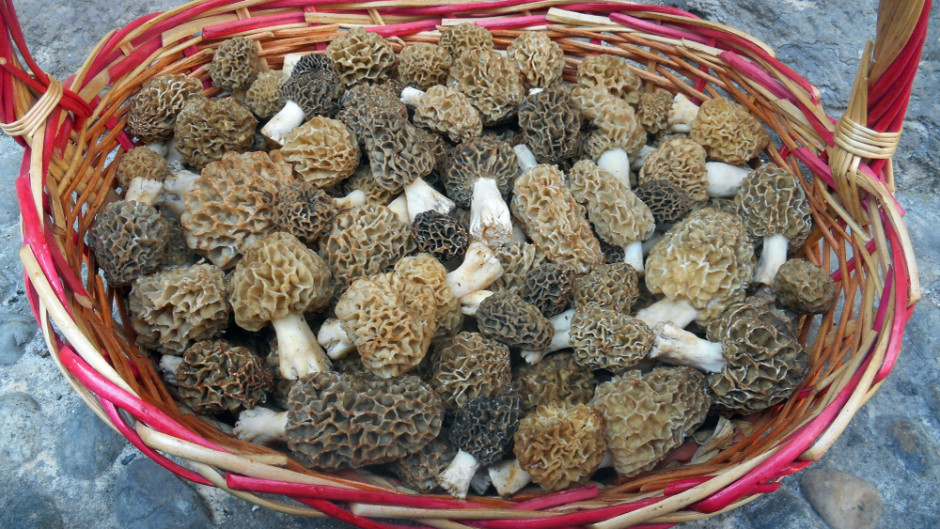Janusz Piechociński is a well-known mushroom picking enthusiast. When he says that the season has started, there is nothing left to do but take the basket and go spring mushroom picking. Which species should you look for in the forest litter and grass?
“On April 14, 2024, at 11:38, I found the first mushrooms this year! Mushroom pickers in towns and villages – it has started! GIVE THE BOR!!!” – wrote Janusz Piechociński, thus inaugurating the mushroom picking season on social media.
Spring mushroom picking. What mushrooms can be picked in spring?
Now that you can go mushroom picking, let’s check which species of mushrooms you should look out for during spring walks. We usually associate picking mushrooms with autumn, but experienced mushroom pickers know that right now you can come across species that you wouldn’t even dream of in autumn. The very warm beginning of spring with high temperatures means that the number of edible mushrooms increases every day. Mushroom picking forums are full of photos of morels, cups and spring geese. Mushroom pickers also boast about the first boletes!
Edible morels
The extravagant appearance of these mushrooms should not fool an alert mushroom picker. Although their appearance does not encourage them to be harvested, edible morels are considered one of the most delicious mushrooms, and by some they are considered tastier even than boletus mushrooms, and they owe their success to their spicy smell and taste.
Mushroom pickers reported the first specimens of these mushrooms at the end of March, although most of them can be found in April and May. On mushroom picking forums, there are the most photos of morels! What are the characteristics of this species apart from the amazing conical hat? This fungus occurs quite rarely, singly or in groups, not only in forests, but also in other green areas, e.g. parks or meadows. It likes the company of ash trees, elms and even fruit trees. It has an impressive conical hat, which, like its stem, is hollow inside; the mushroom itself measures from 3 to 10 cm. In addition to the above-mentioned taste values, unlike most mushrooms, it also has nutritional values. Morels are rich in vitamin D, zinc, phosphorus, copper and iron. Some substances contained in morel have antioxidant and anti-inflammatory properties and accelerate the fat burning process.
Important note: we cannot collect morels in forests, as they have been under partial protection since 2014. The good news, however, is that these mushrooms often grow in gardens, orchards, forest nurseries, meadows and green areas. Unfortunately, beginner mushroom pickers should remain vigilant. Morels can be confused with the fatally poisonous Chestnut-bellied Morels.
Brick-legged bolete
Among the spring mushroom picking, you can look out for an impressive and very characteristic representative of the Boletus family, which, unfortunately, is often called Satan. The bolete is a completely different, much rarer but highly poisonous species found in Poland only in a few localities. In turn, the bolete boletus is edible. It can be found in deciduous and coniferous forests from May to late autumn. It is more common in mountains and foothill areas. It likes the proximity of firs, hornbeams, beeches, spruces, oaks and lindens. It has a characteristic red or reddish stem, and the hat has a suede, matte texture and brown color. After cutting, it immediately turns intensely blue. As mentioned, it is a spring mushroom because it appears in May, but this season mushroom pickers are already reporting the first finds. One of the mushroom pickers notes that he usually finds the first “brick mushrooms” in mid-May, but due to the warm April, the first specimens have already appeared.
A scarlet cup or goblet
Another unusual spring mushroom is the scarlet mushroom (or Australian mushroom, but it is practically indistinguishable). It is difficult to miss this specimen, because the concave, usually intensely red hat, resembling a small cup, attracts the eye. This species can be found from December to May and grows mainly on lying logs and branches. It likes moist habitats and close proximity to willows and alders, which also tend to grow near rivers or streams. Since 2014, the mushroom can be freely collected as it is no longer protected, although few mushroom pickers choose this mushroom. The taste of this mushroom is questioned by some.
Spring goose
Spring mushrooms cause some controversy due to their appearance – such as morels, or their taste – such as the cup mushroom described above. And the spring goose fits into these ambiguities. In this case, it is about taste – for some it is a very tasty mushroom, for others – it is always out of the basket. The fire extinguisher is very characteristic, it has a white or cream hat, blades and a shaft. It grows in meadows, pastures, forest edges, gardens, thickets, and grassy slopes. It can also be found in lowland areas, e.g. in the province. Greater Poland and foothill areas. It is commonly called May Day because the mushrooms appear from April to June, although in cooler summers it can also be found in later months. In Poland, it is collected by a few mushroom pickers.
Smart mushroom picking
The State Forests also remind us of several rules that should be followed when picking mushrooms:
- Do not collect mushrooms that you do not know or have doubts about the correct species identification.
- Only put mushrooms you are sure of into your basket.
- Do not use plastic bags.
- Do not pull out the mycelium, new mushrooms will grow on it.
- Avoid mushrooms that are too small – it is difficult to recognize whether they are lamellar or not!
- Do not give mushrooms to small children!
- Don’t take advice from random mushroom pickers and don’t buy from an unknown source!


